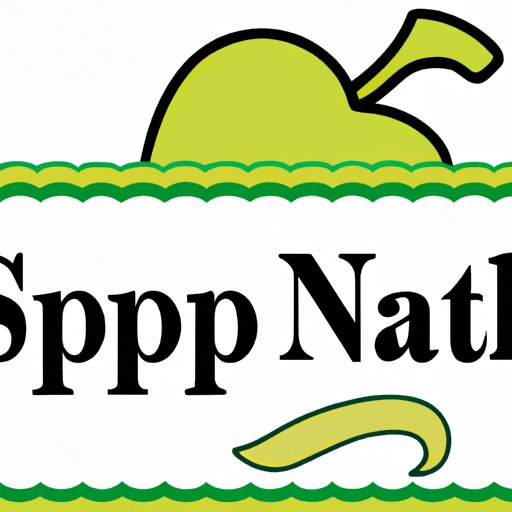
Introduction
SNAP benefits, formerly known as food stamps, were designed to help low-income individuals and families purchase food. These benefits are critical to combating hunger and promoting food security in the United States. The purpose of this article is to provide a step-by-step guide on how to apply for SNAP, as well as offer tips for maximizing benefits and avoiding common mistakes. Additionally, we will discuss eligibility requirements, frequently asked questions, personal stories, and the importance of advocating for SNAP.
A Step-by-Step Guide on How to Apply for SNAP
The first step to applying for SNAP is determining whether you are eligible.
Eligibility Criteria
To qualify for SNAP, you must have a gross income of no more than 130% of the poverty level. Net income, which is gross income minus allowable expenses, must be less than or equal to the poverty level. Eligibility varies based on the household size and other factors such as disability and age.
Required Documentation
When applying for SNAP, you will need to provide documentation to verify income, assets, and expenses. This may include recent pay stubs, bank statements, rent or mortgage bills, and utility bills.
Walk-through of the Application Process
You can apply for SNAP online, in person, or by mail. The application will ask for personal information, income and expenses, and household details. Once the application is received, you may have an interview with a caseworker. This interview may be conducted over the phone or in person and is used to verify your eligibility and provide additional information.
Tips for Maximizing SNAP Benefits
While SNAP benefits can’t be used for non-food items such as diapers and cleaning supplies, you can still maximize the benefits you receive for food purchases.
Smart Shopping Strategies
To stretch your SNAP benefits, consider buying store-brand instead of name-brand items, purchasing in-season produce, and comparing prices across different stores.
Taking Advantage of Discounts and Deals
You can also use coupons and take advantage of sales and special deals. Many grocery stores offer loyalty programs and discounts for certain items.
Planning Meals to Stretch Benefits
Meal planning can also help you use your SNAP benefits efficiently. Plan meals around staples such as rice, pasta, and beans and buy in bulk when possible.
Common Mistakes to Avoid When Applying for SNAP
Mistakes can delay your application and even result in denial of benefits. Here are some common mistakes to avoid:
Overview of Common Mistakes
Common mistakes include providing incomplete or inaccurate information on the application, failing to provide required documentation, and missing an interview with a caseworker.
Tips on How to Avoid Them
To avoid these mistakes, double-check your application for accuracy and completeness, make sure you have all required documentation before submitting your application, and keep track of important deadlines and appointments.
A Beginner’s Guide to SNAP Eligibility
In addition to income limits, there are other eligibility requirements to keep in mind.
Income Limits
As previously mentioned, the gross income limit is 130% of the poverty level. The poverty level varies based on the household size and state. Net income, which is gross income minus allowable expenses, must be less than or equal to the poverty level.
Household Size Requirements
Household size includes all individuals who live together and share meals. This includes children, relatives, and non-relatives. The number of people in your household will determine the amount of benefits you are eligible to receive.
Other Factors That Impact Eligibility
Other factors that may impact eligibility include residency status, immigration status, and student status.
Frequently Asked Questions About SNAP
There are many questions that individuals may have when it comes to SNAP benefits.
Benefits Calculations
SNAP benefits are calculated based on household size, income, and expenses. The maximum benefit amount will vary based on the number of people in the household.
Types of Foods That Can Be Purchased
You can use your SNAP benefits to purchase most foods, including fruits, vegetables, meat, dairy products, and bread. SNAP benefits cannot be used for alcohol, tobacco, or hot prepared foods.
Other Related Questions
Other frequently asked questions include how to check your balance, what to do if you lose your EBT card, and how to report changes in income or household size.
The Impact of SNAP Benefits on Families
SNAP benefits can be a lifeline for families struggling to put food on the table.
Personal Stories of How SNAP Benefits Can Help
Many families rely on SNAP benefits to make ends meet. These benefits can help families put healthy food on the table and alleviate the stress of not having enough food to feed their children
Discussion on the Importance of Food Security
Food security is a critical issue in the United States, and SNAP benefits play an essential role in addressing this issue. When families have access to enough food to feed their household, they are better able to focus on other areas of their lives, such as work and school.
Advocating for SNAP
Advocating for SNAP is critical to ensuring that low-income families have access to the food they need.
Explanation of the Importance of Anti-Hunger Programs
Anti-hunger programs, including SNAP, are essential to alleviating hunger and promoting food security. These programs provide a critical safety net for families and individuals in need.
Tips and Resources for Taking Action
There are many ways to get involved and advocate for SNAP benefits. These include contacting your elected representatives, volunteering at local food banks, and spreading the word about the importance of these programs.
Conclusion
In conclusion, SNAP benefits are an essential tool in fighting hunger and promoting food security. It’s crucial to understand the eligibility requirements and the application process to ensure that you receive the benefits you need. By maximizing benefits, avoiding common mistakes, and advocating for SNAP, we can help support families in need.





